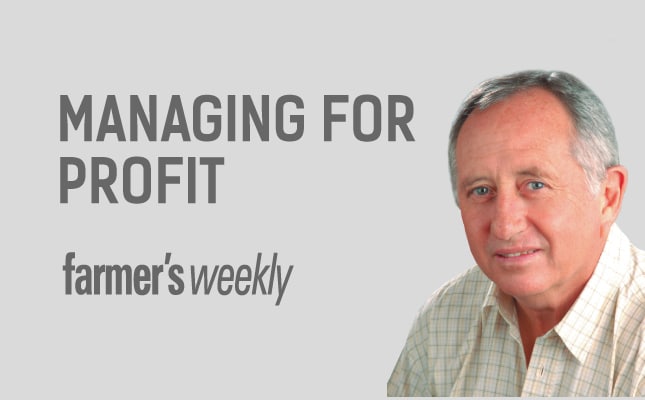
How’s the cost cutting going? I hope you’re finding ways of reducing costs without having to do anything that will come back and bite you later. For example, buying less fertiliser, meaning a production loss next year. With labour, fuel and other costs having gone through the roof, every sensible farmer should be going through a meticulous cost reduction exercise. But it’s a dangerous time, because it’s a process that places attention on the short term when farming is very much a long-term business.
READ:No trust, no credit, no growth!
The savings from cutbacks are easily calculated. The longer-term impact is much more difficult to determine. Be very careful about taking decisions which save money now, but cost much more in years to come. Recently, I was listening to a group of Lowveld fruit farmers discussing the costs and benefits of the myriad quality management systems required these days. While not compulsory, GlobalGAP has gained such wide acceptance it has become a standard expected of any commercial farmer. In addition, most leading supermarkets impose systems such as Fair Trade, Nature’s Choice, Leaf and so on. These all mean money.
Quality systems
By the time I left, the general consensus was that these systems don’t deliver sufficient value to justify their costs.
Driving back to my office, I thought back to my own first ‘quality management system’. It was a notebook in my pocket, in which I’d note anything needing attention. A leaking pipe, an idea to improve the way we were organising something on the farm, and so on.
Later, I’d look through these notes, and put some on my own ‘to do’ list or pass on the idea to the person responsible. What frustrated me was that my lists never seemed to get shorter and our staff seldom seemed to pick up and deal with these problems themselves.
Sceptical
I was then introduced to the National Occupation Safety Association (Nosa), a home-grown quality management system aimed at making the workplace safer. I was sceptical. It would push our costs up and some of the requirements seemed to be complete nonsense. But we worked through the manual, and it turned out that, if we did all the things we thought were sensible, we’d reach a three-star level. To please our workshop manager more than anything else, I reluctantly committed us to meeting this standard.
As the programme unfolded, I noticed I wasn’t going through as many notebooks as before. When our first grading took place we were only a shade under four stars. Everyone took great pride in the Nosa board that went up at the farm gate announcing our achievement. We earned our fifth star a few years later.
Money saved
Sure, it cost us quite a bit to set it up, but it’s insignificant in comparison to the money saved over the years. Workplace injuries and lost man-hours have been all but eliminated. Medical costs have dropped close to zero. But by far the major impact has been that standards have gone up throughout the business, and not only in areas affecting safety. Things get fixed quickly now before they become costly major issues. Nosa has changed the way people do their jobs.
The key lesson for me was that real ‘quality’ improvement and maintenance can’t be achieved by one person. If you’re serious about running a high quality operation, you can’t do it without making use of a formal quality management system.
Take care which one you choose. Don’t blindly follow every single element if it makes no sense. But commit to one, and much as we’re all facing a cost squeeze right now, don’t discard best practice to save short term at your long-term cost.
Contact Peter Hughes at [email protected]. Please state ‘Managing for profit’ in the subject line of your email.
This article was originally published in the 19 April 2013 issue of Farmer’s Weekly.







